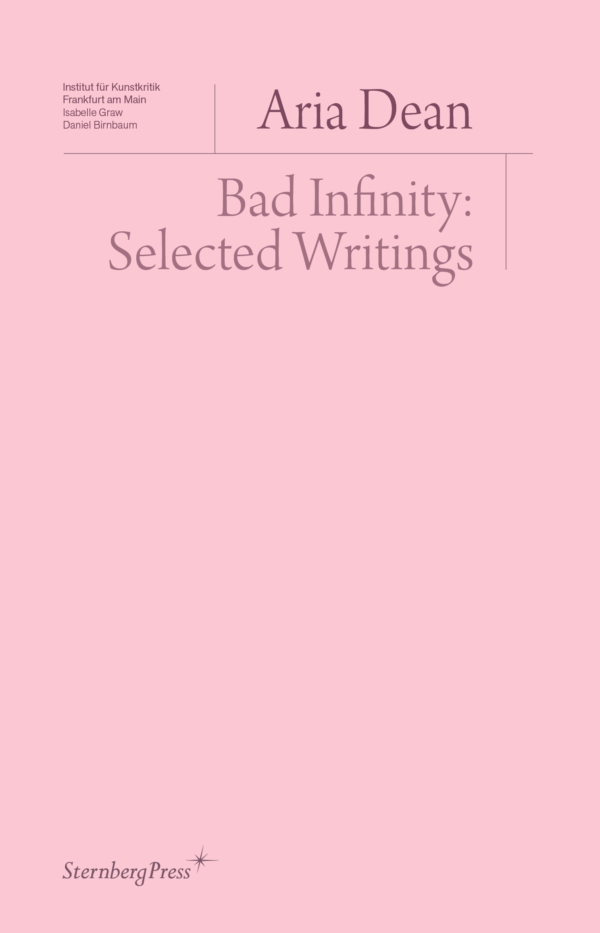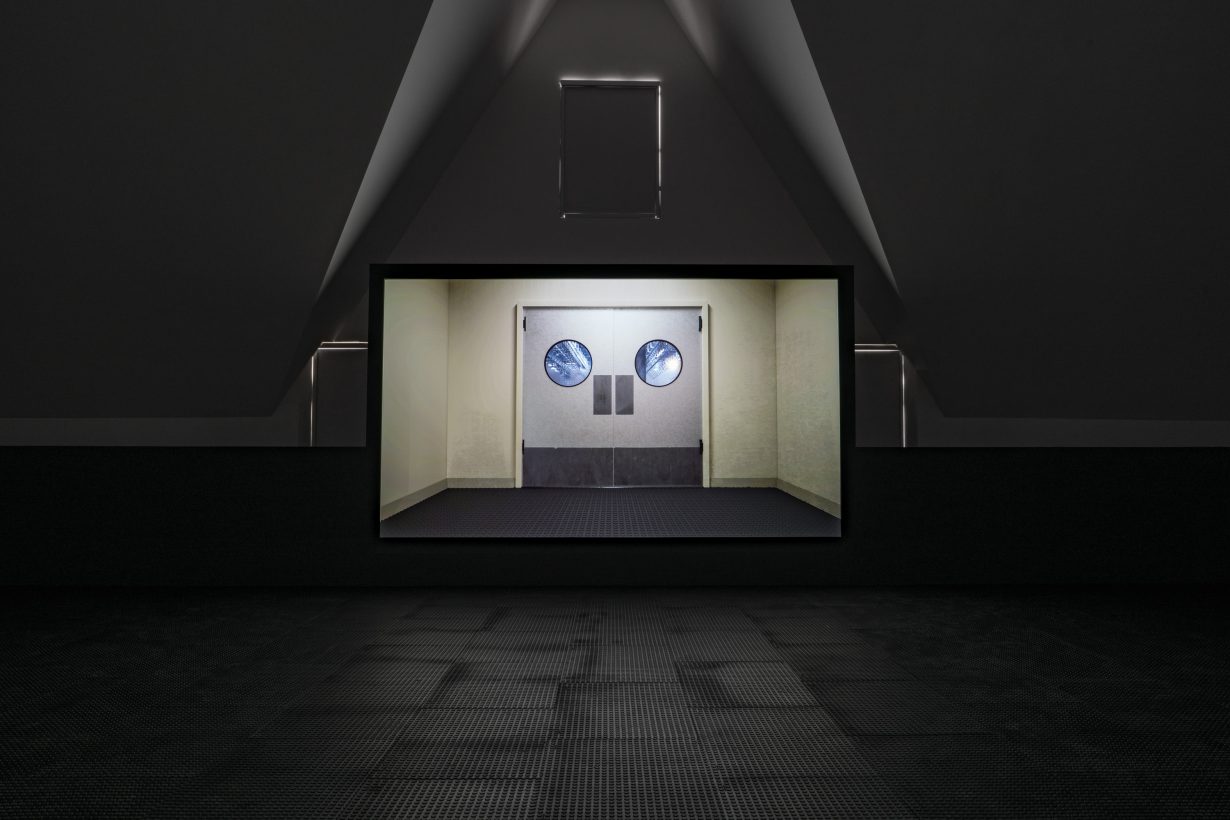The artist’s essay collection Bad Infinity seeks to understand how the best artworks function alongside a deeper perception of Americanness and Blackness
Essays should make you think new thoughts about things you’ve either never considered, or only examined with a deceptive, false certainty. The ten texts in Aria Dean’s collection do this, with a complexity often spilling into convolution. This dynamic can be appreciated as an inherent vice of the large goal that the New York-based artist/writer sets herself. Not content to understand how the best artworks function, she wants to intertwine this understanding with a deeper perception of Americanness and Blackness.
Dean’s ‘Acknowledgements’ prep us for chaos: each text ‘is a creative writing exercise… more interested in experimenting with whether it is itself possible than with being correct’. The title Bad Infinity is a phrase from Hegel, which she thought ‘sounded cool’. Her near-cocky nonchalance elicits certain unflattering comparisons between the populist disdain for truth and an approach to art theory often heavy on rhetoric and reference but light on clear argument. This concern, however, is counterbalanced by the effort of Dean’s thinking, and her complex demeanour on the page. A one-way penpal exchange with the sculptor Robert Morris is characterised by tenderness and subtle self-deprecating humour. The reader is in turn presented with a challenge, experiencing this lightness only pages away from expositions on the dehumanisation of Black people, a subject so grave as to render humour unspeakable.
‘Channel Zero’, for example, winds through the phenomenon of police brutality videos. Ostensibly serving justice, these clips have also become ‘vernacular cinema’. Dean demonstrates how certain artists – John Akomfrah, American Artist, Harun Farocki, Peter Friedl – can help us to understand the broader social, technological and perceptual mechanisms through which both police brutality and its documentation are carried out. This important task, Dean explains, coexists uncomfortably with the urgent action that state violence demands. ‘Black Bataille’ sketches a theory of art. Dean senses resonance between Georges Bataille’s idea of ‘base matter’, which describes things that are ‘the low, the lumpen, and the inhuman’, and the position that to be Black – as articulated in Afropessimist thought, particularly via American writer/dramatist Frank B. Wilderson III, interviewed at length elsewhere – is to have been dehumanised by white American society. Following a conviction that art should fundamentally embody reality, Dean posits that the debasement of Black people, being central to Western society, must also be essential to any broadly applicable conception of art. To the extent that I’m reading between the lines, it’s because those lines are laced with so many energised, provocative, sometimes contradictory thoughts that any summary requires abstractions and deductions.

‘Trauma and Virtuality’ (2018) asks what constitutes actual and virtual experience in the internet age. A voracious quote-hunter, Dean primes us for the complicating of such distinctions with an epigraph from academic Susan Willis: ‘The real is not a kernel, conveniently rock hard and discernible through the veil of fiction; it is instead the very structure, the warp and weft of the veils’. Dean then exhaustively reads two violence-fixated artworks: Jordan Wolfson’s Real Violence (2017) and Arthur Jafa’s Cassowary: Mechanics of Empathy (2017).
By way of these artworks, Dean retrains her focus from the massive question of the place of virtuality in actual experience to that of how our experience of violence figures into this equation. Having seen the discussed works, I’m not quite ready to buy her thesis that they ‘force a critical awareness of the spectator’. This kind of critical and reflective viewing presupposes a set of tools for interpreting art, which – it is easy to forget – tend to be more readily available to people educated in American MFA programmes. All the same, the idea that art might be capable of advancing our society’s deeply confused relationship to screen-mediated reality and violence is hopeful, and it is this spirit – variously marked by comedy, gutting realism and unimpeachable curiosity – that characterises Dean’s writing.
Bad Infinity: Selected Writings by Aria Dean. Sternberg Press, $23 / €19 (softcover)
